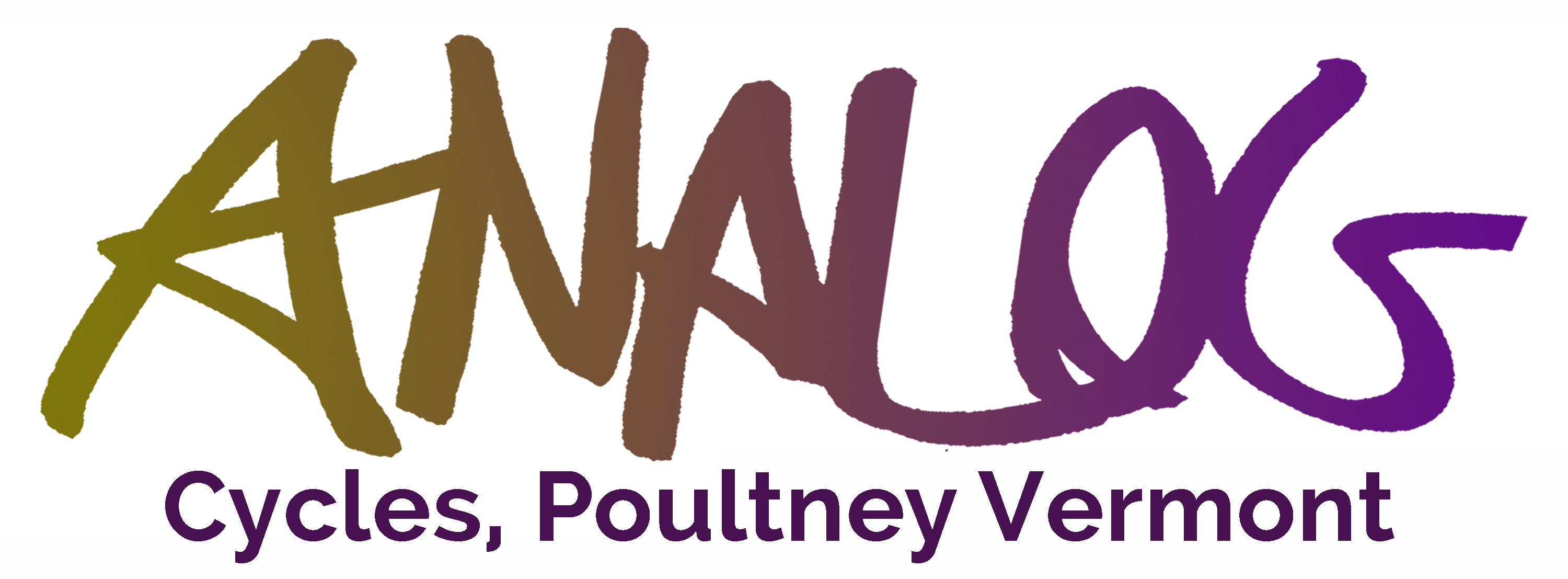A quick sketch of a standard flat mountain bar
A quick sketch of a standard flat mountain bar
First, a definition: Flat bars are just a general lump term for normal mountain bike bars. Some have a bit of rise, a bit of up and back sweep, but if you asked a kid to draw them, they would draw something like picture to the left (it’s literally just a straight line).
Alt (short for alternative) bars might technically be flat in that most models have no rise to them. However, they have much more back sweep, and more bendy parts. They often also have more than one hand position. Alt bars generally can accept standard mountain bike brake levers and shifters. Examples of Alt bars include Velo Orange Crazy Bars, Soma Eagle Bars, Jones Bars, Surly Moloko, On One Mary, etc.
Flat bars are the ergonomic equivalent of wearing high heels on a hike. Flat bars were born outta motocross, where riders needed a wide, honkin’ lever (the handlebar) to keep the heavy front wheel and fork combo from flopping around in technical, loose terrain. All this while riding at a much higher speed, on a much heavier vehicle than a bike. Early mountain bikes used motorcycle or moped handlebars and brake levers, not because they were the best thing to use, but because they were the only kind available. The alternatives were cruiser bars (these would bend immediately when taken off-road), or road bars, which at the time were way too narrow (and flimsy) for off-road use. The only thing early mountain bikers could really ride off-road with was moto-bars.
People are creatures of habit. A boring cliche, but it’s important to keep in mind when you consider why certain things that shouldn’t stick around, do stick around. Flat bars are still manufactured because the first mountain bikes had them. That’s the same reason why mountain bikes still ran triple cranks up till a few years ago, why bike geometry was so standardized for years, etc. But just like it doesn’t make sense for everyone to wear shoes with buckles and powdered grey wigs just cause ole’ G-Double-Ya did, it also doesn’t make sense for most contemporary mountain bikes to keep moto style bars as the primary handlebar option. Why? Because just like powdered wigs, moto style flat bars are not comfortable.
Bars with a generous back sweep, like the Jones bars, are far more ergonomic than flat mountain bike bars. Ergonomic grips abound these days, not because flat bars are naturally ergonomic, but because they are not. These grips ease the pressure inflicted by a lack of backsweep. Your ulnar nerve (the bit that makes your fingers go to sleep when it’s pressed on) is compacted and can collapse when you ride standard mountain bike handlebars. Ergonomic grips, with that big unsightly paddle on the back, spread out the pressure on that nerve. It’s a band-aid to a bad bar.
Good swept-back bars emulate your hand and wrists’ natural, neutral position. They allow you to relax your shoulders and neck by turning your wrists from perpendicular to your body, to a more in-line position. To demonstrate this: standing, let your arms and hands relax at your sides. Now make a fist, and bring those fists up to a rough handlebar height, somewhere in front of your chest.
Stay tense. Don’t change the wrist angle as you bring your hands up. Now, note where your elbows are, and how your neck feels. Next, while keeping your hands in fists, turn your wrists 90 degrees, like you would if you were holding a traditional flat bar with no sweep. Watch how your elbows shoot out, how your neck tenses, your shoulders tense and feel out of joint. That’s what is happening constantly when you ride a flat bar.
There is no reason to ride a flat bar for normal mountain bike riding. Downhill racing, or big jumps are another thing, as they’re closer to motocross riding. But cross country riding and bike packing both benefit from more swept back bars. You’ll adapt in less than one ride to the new position, but be in less pain.
Put some alt bars on your flat bar bike. You won’t go back. Run whatever grips you dig. We recommend Oury grips for bigger hands, Silicone grips for cold weather riding, and Ergon’s ergonomic trail grips for smaller hands. Larger riders should check out the full width Jones Loop. Smaller riders or tall folks with narrow shoulders should either investigate either cut down Jones bars, Nitto’s Forest Amblers, or Surly Molokos. Holler with questions, we love to hear from ya. Unless it’s negative. Keep that to yourself.
We have a new article up about picking the right Alt bar width. That’s here!
The best tools out there are beautiful, highly functional, durable and serviceable. Enlightened bikes are efficient, beautiful, comfortable and fun to work on. A bicycle brings you closer to experiences, they enrich a locality, they are spiritual partners on your journey through life. Analog Cycles builds enlightened bikes for life’s peregrinations.
© 2025, Analog Cycles Powered by Shopify
